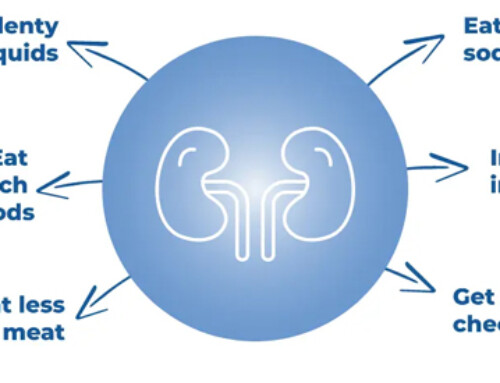Table of Contents
Lupus can affect the kidney in many ways. The pathologic classification of lupus nephritis is based on kidney biopsy. Lupus can also affect the kidney in other ways outside of the classification system.
This article will provide an overview of pathologic and clinical findings associated with the different types of lupus nephritis.
General Biopsy Concepts
Kidney biopsy has 3 components.
- Light Microscopy
- Stains for:
- Immunoglobulin – IgA, IgG, IgM
- Complement – C3, C1q
- Electron Microscopy
Light Microscopy: This shows glomerular changes, but the renal prognosis is best predicted by the tubulointerstitium. A high degree of interstitial fibrosis and tubular atrophy (IFTA) indicates irreversible renal damage with a poor prognosis.
Immunofluorescence: Lupus nephritis typically stains for all 3 immunoglobulins and both complements. This is referred to as “full house” as in poker hand.
Electron Microscopy: Location of the immune complexes in the glomerular capillary wall is predictive of the severity of glomerular inflammation. These are seen as deposits on electron microscopy. The deposits may be:
- Mesangial: Associated with a nephritic picture, but less severe than that with subendothelial deposits (less likely to be associated with a decreased GFR)
- Subendothelial: In general subendothelial deposits are associated with the most severe nephritic type picture, that is associated with a decreased GFR.
- Subepithelial: Associated with membranous nephropathy. This will typically be associated with proteinuria, often nephrotic.
In lupus nephritis deposits will often be in multiple or all 3 locations although 1 location may be predominant.
Lupus Nephritis Classes
There are 6 classes of lupus nephritis. Classes I – IV have progressively more severe glomerular inflammation, Class V is associated with nephrotic proteinuria. Class VI has advanced scarring. Multiple classes may be present concomitantly (i.e class III + V or IV + V).
Class I: Minimal mesangial
Biopsy:
- Light microscopy: Normal
- Electron microscopy: Mesangial deposits
Clinical:
- Normal urinalysis and GFR, +/- minimal proteinuria
Class I lupus nephritis is not often seen as the renal manifestations are too mild to warrant biopsy. There is a good prognosis, no treatment is indicated.
Class II: Mesangial proliferative
Biopsy:
- Light Microscopy:
- Mesangial hypercellularity and/or expansion
- Electron Microscopy:
- Mesangial deposits.
- There may be a few subepithelial and/or subendothelial deposits
Clinical:
- Microscopic hematuria and/or proteinuria. Normal GFR.
As in class I, there is a good renal prognosis and no treatment is indicated.
Class III: Focal proliferative
Biopsy:
- Light Microscopy:
- < 50% of glomeruli affected
- Segmental endocapillary or extracapillary glomerulonephritis
- Electron Microscopy
- Mesangial and subendothelial deposits
Clinical:
- Hematuria and proteinuria. There may be an associated decreased GFR.
Class IV: Diffuse proliferative
Biopsy:
- Light Microscopy
- > 50% glomeruli affected
- Segmental endocapillary or extracapillary glomerulonephritis
- Crescents may be present
- Electron Microscopy
- Subendothelial deposits
Clinical:
- Hematuria and proteinuria
- Decreased C3
- Nephritic syndrome with decreased GFR
Class V: Membranous
Biopsy:
- Light Microscopy:
- Diffuse thickening of glomerular capillary walls
- Spikes on silver stain
- Electron Microscopy:
- Subepithelial deposits
- Immunofluorescence:
- Phospholipase A2 Receptor antibody (PLA2R ab) negative.
- Exostosin 1/ Exostosin 2 positive in 30-40%
- Neural cell adhesion molecule 1 (NCAM1) positive in @ 6%
- Type III transforming factor beta receptor (TGFBR3) positive in @ 6%
Clinical:
- Associated with nephrotic proteinuria/ syndrome as in primary membranous
- There may be concomitant other classes of lupus nephritis.
Class VI: Advanced Sclerosis
Biopsy:
- Light Microscopy:
- Global glomerulosclerosis > 90% glomeruli.
- Tubular atrophy and interstitial fibrosis
Clinical:
- Irreversible renal injury (scarring)
- Proteinuria with slowly progressive kidney disease/ decrease GFR
- Bland urinalysis (minimal proteinuria)
Other Lupus Renal manifestations
- Thrombotic Microangiopathy (TMA)
- TMA has characteristic findings on renal biopsy
- May be associated with microangiopathic hemolytic anemia and thrombocytopenia or may be renal limited
- Clinical manifestations include acute or subacute kidney injury and proteinuria
- Podocytopathy:
- Diffuse foot process effacement with nephrotic proteinuria/syndrome similar to minimal change disease
- Absences of immune complex deposits
- Interstitial Nephritis
- Often associated with glomerulonephritis
- Renal Tubular Acidosis (Distal Type 1) may be associated with lupus
Summary
The kidney is commonly affected by lupus. Classes I – IV lupus nephritis have progressive more severe glomerulonephritis. These may change in a given patient, but it is not necessarily a progression. Class V is a nephrotic picture (membranous), but may be mixed with other nephritic classes (I – IV). Class VI indicates a high degree of irreversible scarring. Outside this classification system lupus can also cause thrombotic microangiopathy and a podocytopathy similar to minimal change disease



